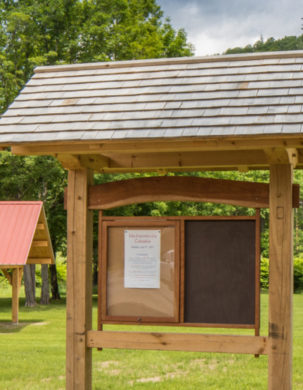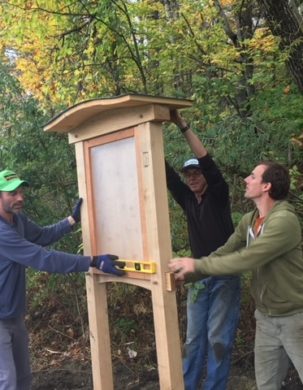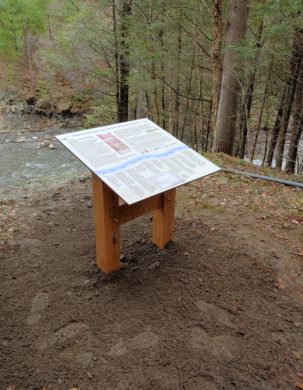TimberHomes recently welcomed a cadre of partners to our land at 21 Fork Road in Montpelier to plant a riparian buffer along the Winooski River. The project was spearheaded by the Friends of the Winooski River, who assembled a diverse group of partners for the effort.
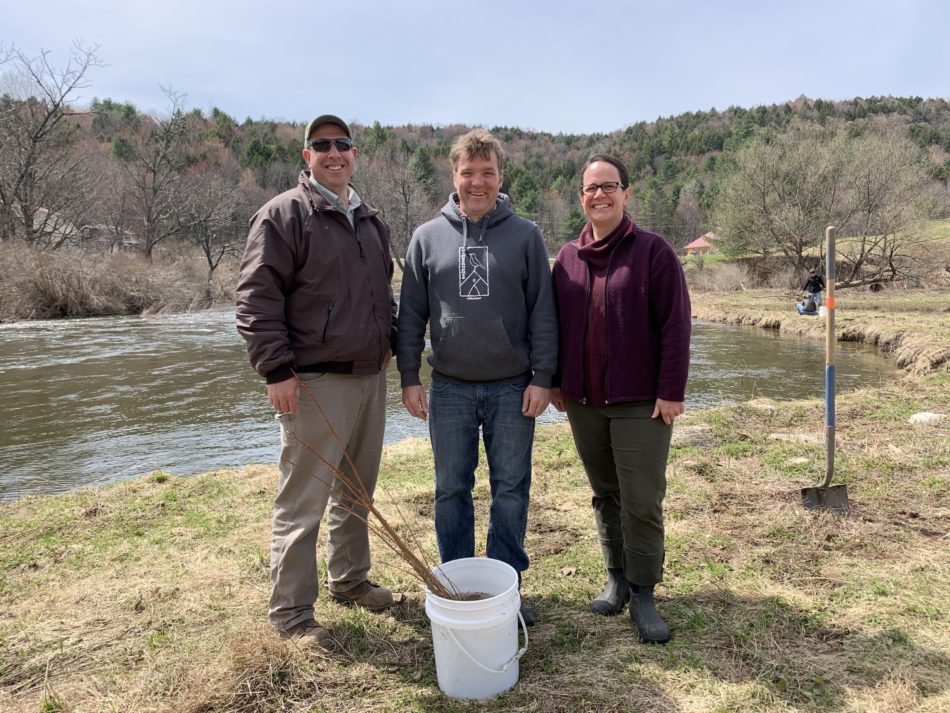
On the banks of the Winooski River from left to right are Chris Smith of the U.S. Fish & Wildlife Service, Timo Bradley of TimberHomes Vermont, and Vermont Agency of Natural Resources Secretary Julie Moore.
U.S. Fish & Wildlife Partners for Wildlife Program provides technical and financial assistance to Friends of the Winooski River for riparian projects like the one at TimberHomes. U.S. Fish & Wildlife’s Katie Kain visited the site together with TimberHomes employee-owner Timo Bradley, and Friends of the Winooski River director Michele Braun to assess the soil type and the native tree species that currently live along the river. Katie created a map of the planting site, calculated the size of the area to determine the number of trees that would go in the ground, and put together a list of diverse native plant species.
On the day of the planting U.S. Fish & Wildlife’s Chris Smith and Vermont Agency of Natural Resources Secretary Julie Moore joined a class from the Community College of Vermont led by TimberHomes’s own Helen Doyle, who moonlights as a CCV professor of Environmental Sciences. Volunteers got into the dirt and planted saplings all along TimberHomes’ river edge. It was an incredible feat that only could have been accomplished with the many hands involved. In addition to the partners mentioned above, volunteers from the Montpelier Tree Board got in on the action, as did employees from National Life Group.
Friends of the Winooski River relies on volunteer labor for almost all of their planting work, believing in the benefit to watershed residents of having opportunities to connect with and restore nature. To volunteer or to make a donation to the project, please visit the Friends of Winooski River website.
In addition to the trees provided by the U.S Department of Fish & Wildlife, TimberHomes received a number of butternut tree saplings from David “Jake” Jacobs. Jake propagated the trees in East Brookfield from a particularly healthy parent tree in the hopes of spreading healthy native butternut trees throughout Vermont. TimberHomes’ Lucy Labadie and our intern Charlie Bradley spent two days this spring planting them.
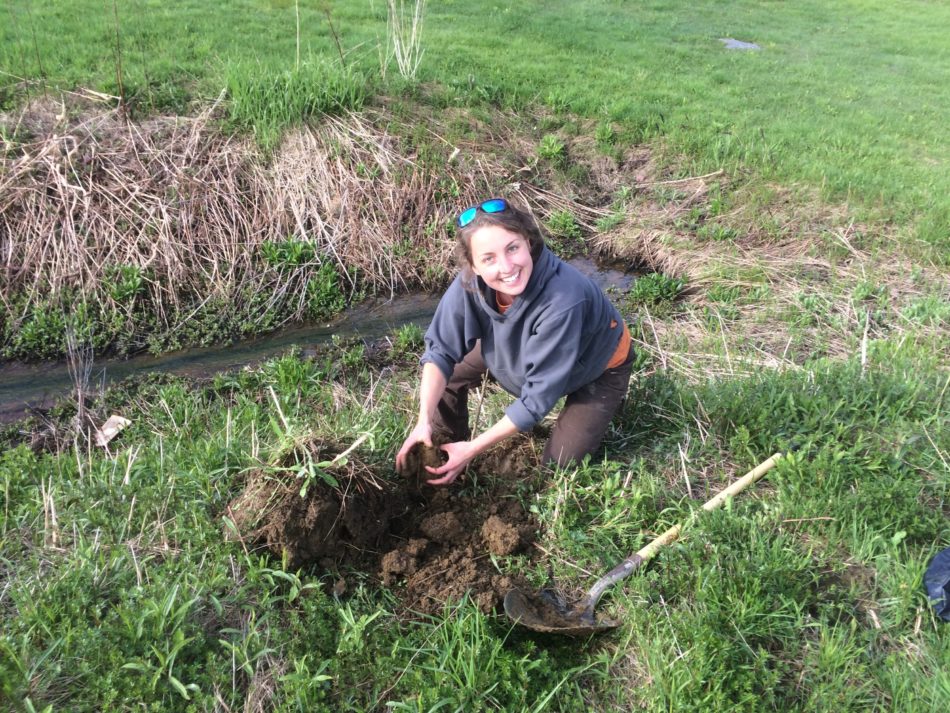
Lucy Labadie of TimberHomes planted a number of butternut trees along the bank of the Winooski River.
Planting trees and shrubs along Vermont’s rivers and streams provide a myriad of benefits, including:
- Trees and shrubs along streams help to slow rain as it flows over the land, which helps to maintain stable stream banks and protect downstream property.
- Woody vegetation has deep roots that hold soil in place and reduces erosion. This protects the land and is critical to improving water quality in streams, rivers and lakes.
- Overhanging riparian vegetation provides shade to keep streams cool, which is especially important for wild trout populations.
- Buffers provide valuable habitat for wildlife and birds. In addition to providing food and cover they are an important corridor for all kinds of species.
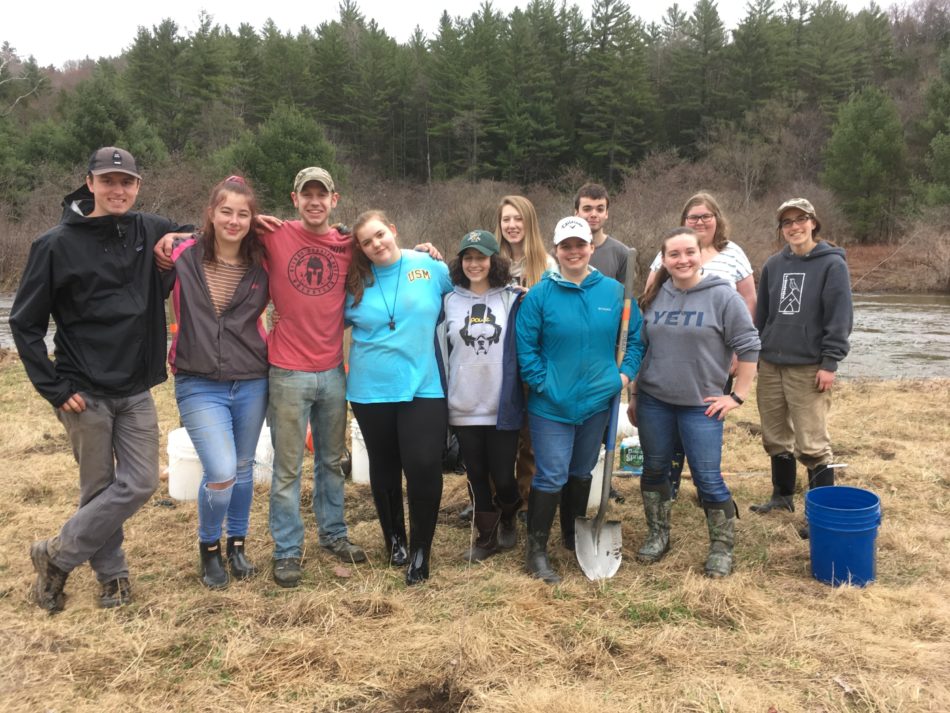
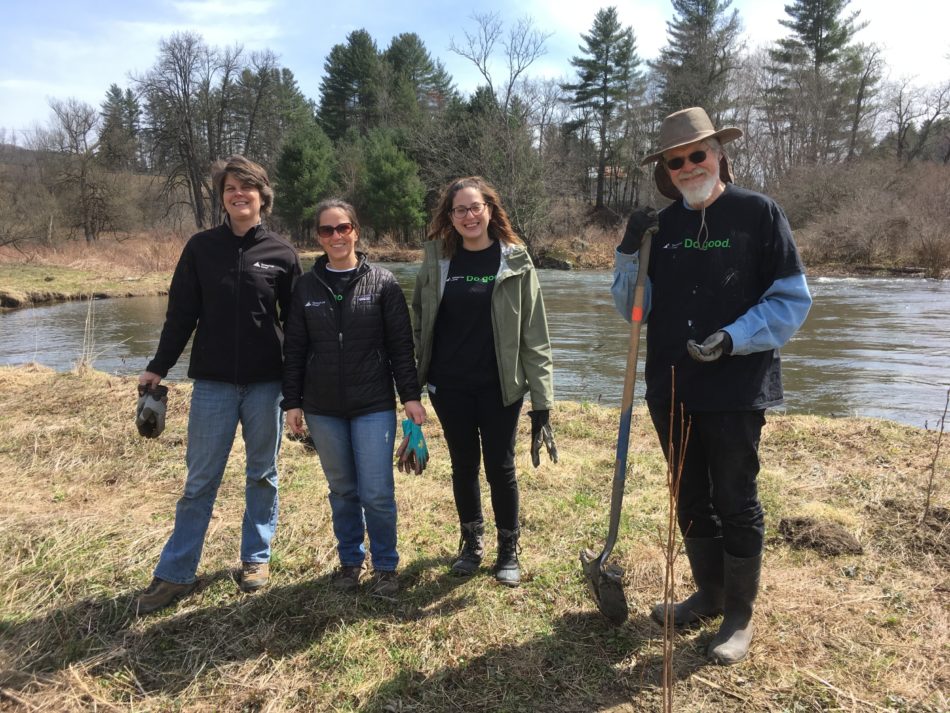
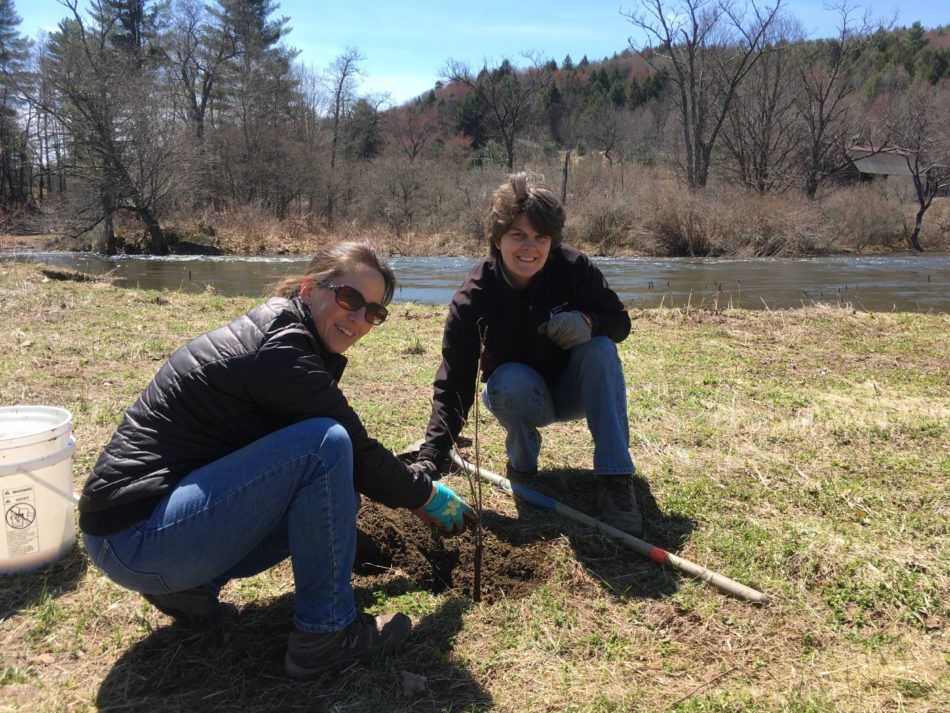
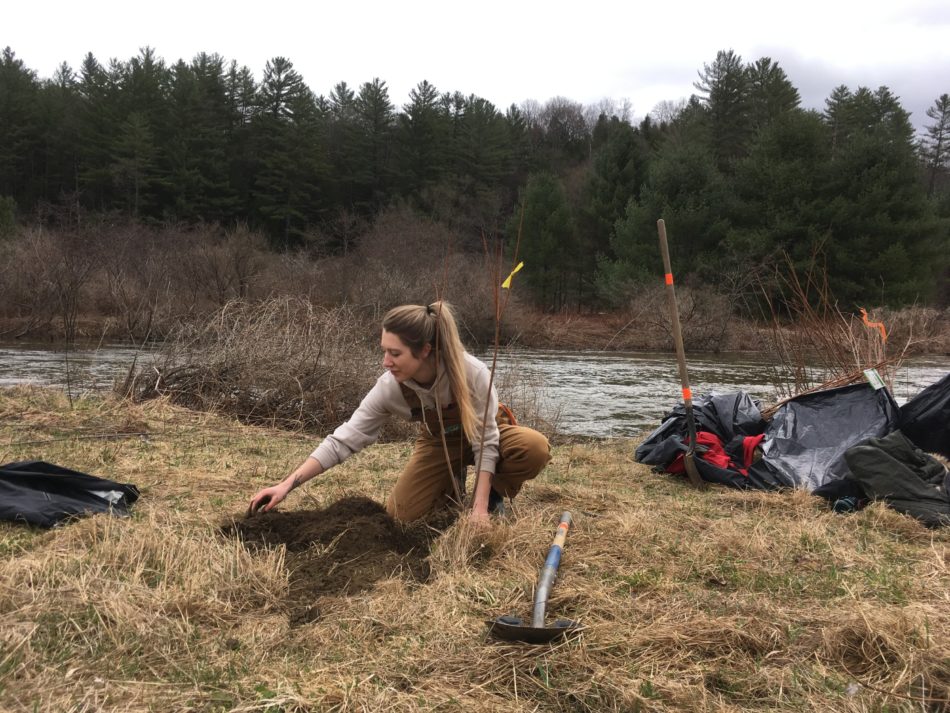
If you are interested in TimberHomes’ work with national and local parks, non-profits and trail associations, please check out our beautiful historic timber frame park kiosks.
